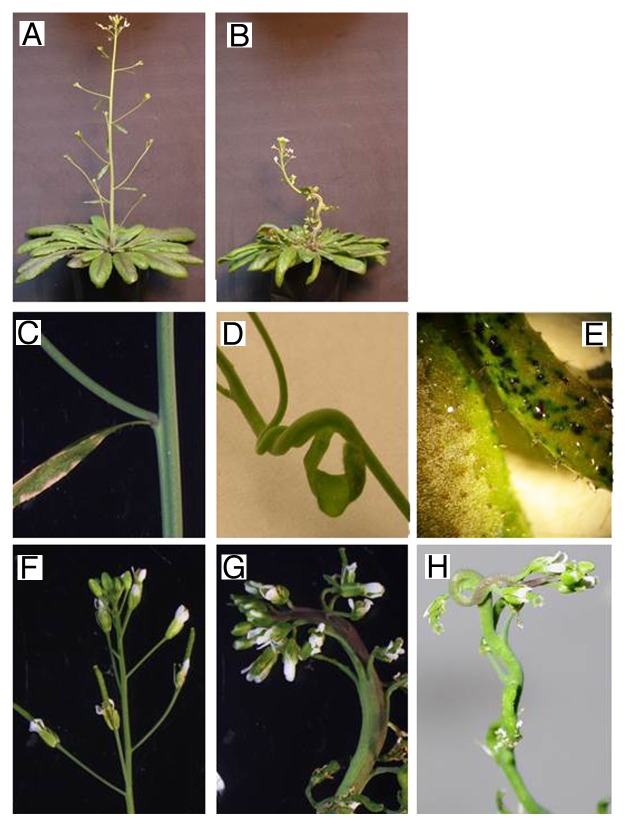Figure 1. Growth phenotypes and leaf cuticle characteristics of Arabidopsis thaliana plants overexpressing the PMEI5 gene. WT plants (A) exhibited straight stems, while PMEI OE plants (B) had twisted stems and stunted growth. The WT plants (C, F) showed clear organ separation; in PMEI OE plants (D, G, and H) the side stems carrying a leaf or inflorescence failed to separate from the main stem. This led to a thickened stem and twisting growth around the areas of failed separation. Note that the stem regions associated with an unseparated leaf or inflorescence were always on the inside of a twist or loop. (E) Comparison of toluidine blue staining of leaves of WT- (left) and PMEI5 OE- plants (right) to evaluate the integrity of the cuticle. Toluidine blue cannot penetrate an intact cuticle; this dye was readily washed off from the surfaces of the WT leaves (E, left). In PMEI OE leaves (E, right), the staining remained after washing, indicating a cuticle defect. Also note that the cuticle of the WT leaves appeared as a whitish layer under the dissection microscope light.

An official website of the United States government
Here's how you know
Official websites use .gov
A
.gov website belongs to an official
government organization in the United States.
Secure .gov websites use HTTPS
A lock (
) or https:// means you've safely
connected to the .gov website. Share sensitive
information only on official, secure websites.
